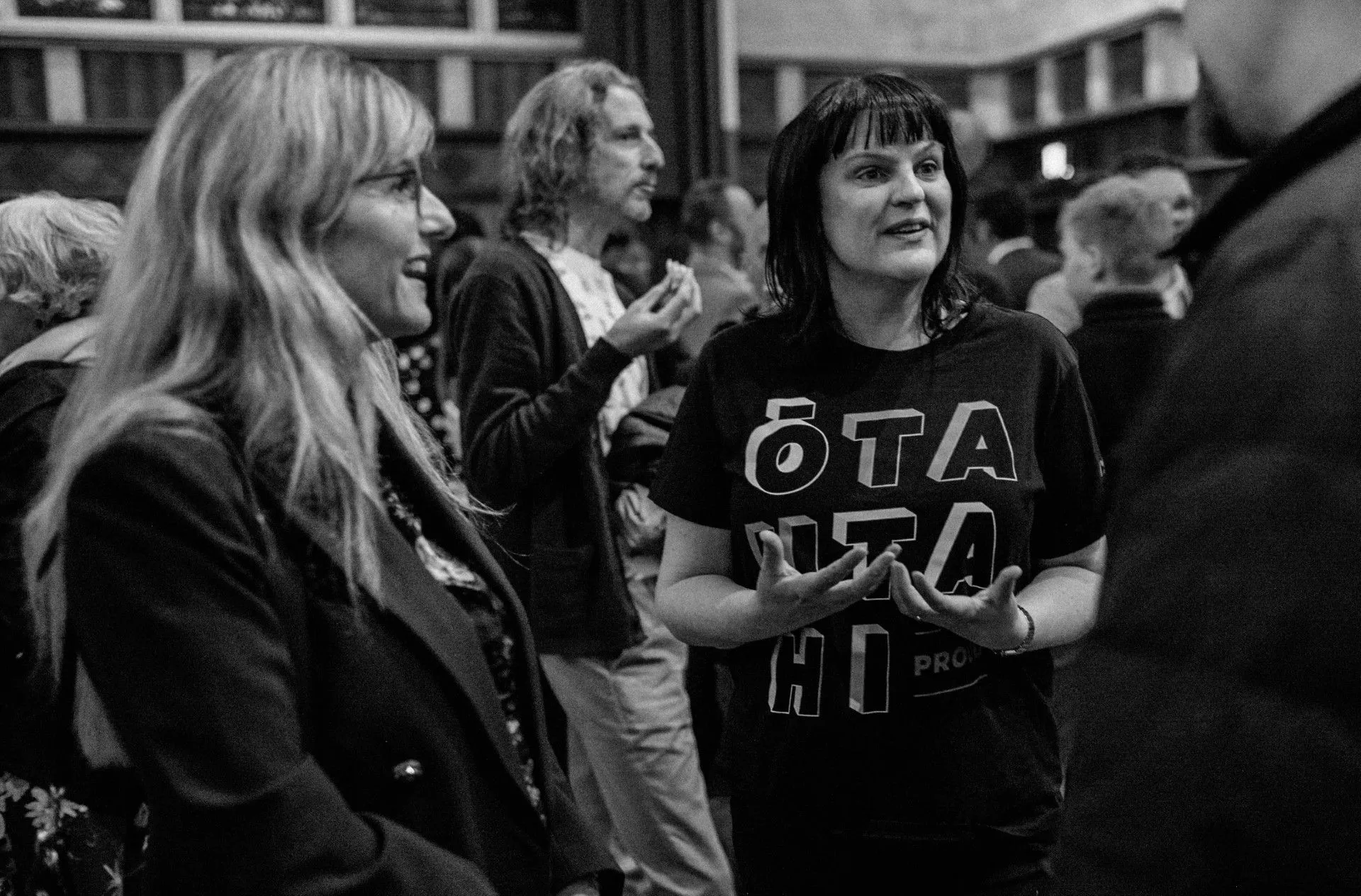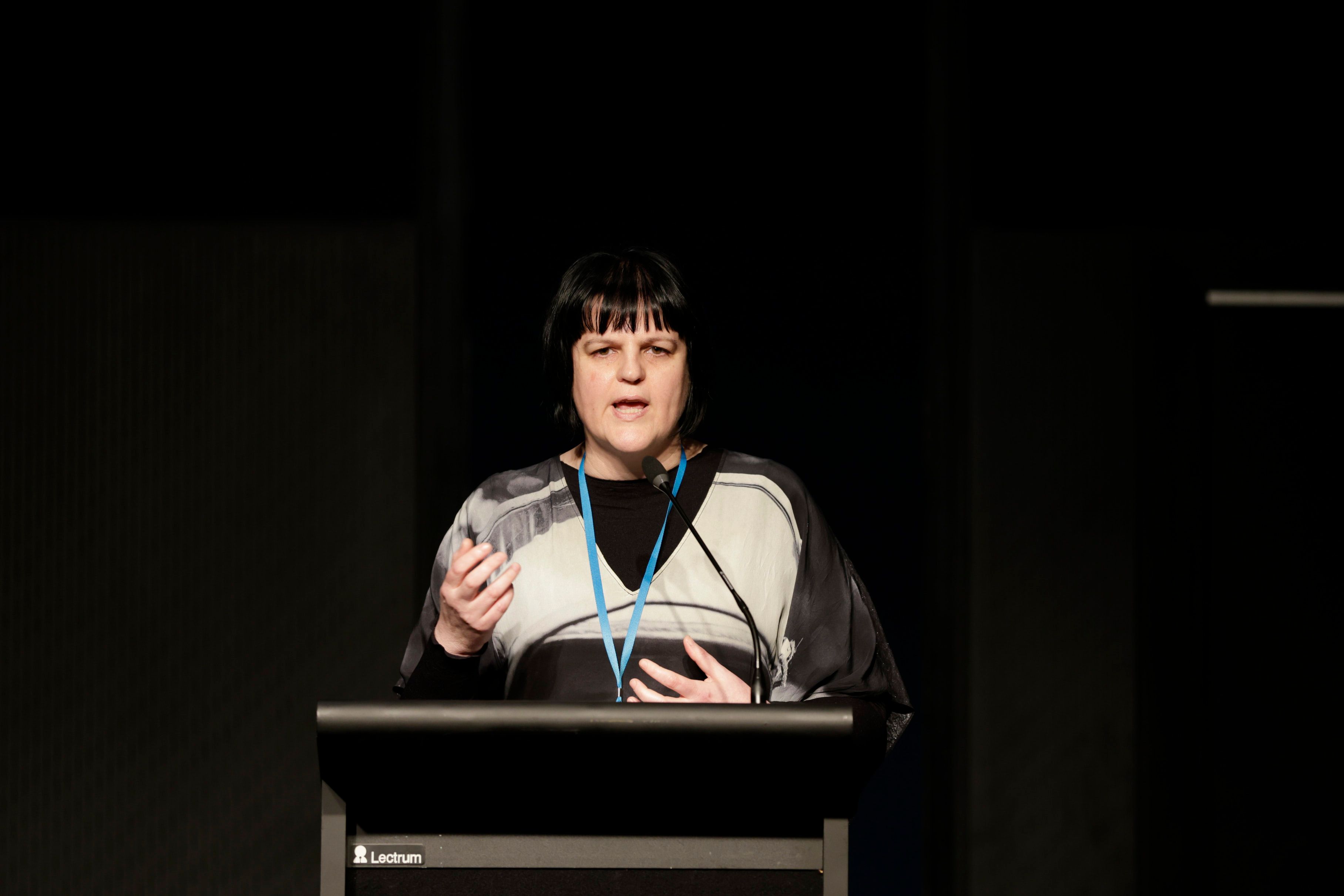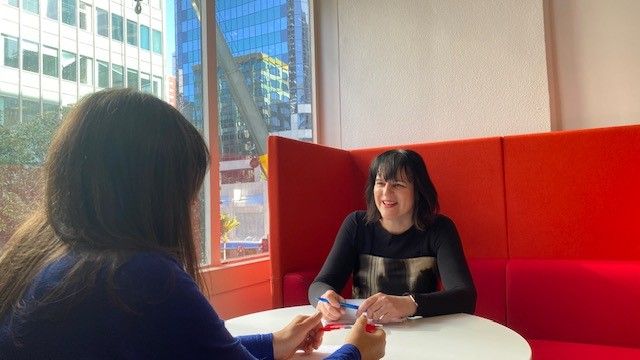Creative NZ Boss On Funding - "Leave No Stone Unturned"
In part two of our exclusive interview with the new CNZ Chief Executive, Gretchen La Roche discusses funding the sector, the changes facing arts organisations and changes in perception.

“If we don't grow that pie, we're not standing still, we're effectively going backwards.”
Gretchen La Roche knows what the creative sector is thinking.
As we covered in the first part of the new Creative New Zealand (CNZ) Chief Executive’s first in-depth interview, La Roche has been keeping close to the pulse of what those who live and breathe the arts and creativity as a career, as well as those who aspire to do it.
And she wouldn’t be able to go more than a few minutes talking to someone in the sector without funding coming up in conversation. The way funding runs, the lack of pūtea, how the system has to change - there’s no avoiding the topic in some shape or form.
Creative individuals and organisations want reassurance. They want answers.
While noting in the previous article there’s more ways she wants to see CNZ add value to the sector, she acknowledges that the role of adding financially is of critical importance to many.
But while La Roche is bringing a fresh approach to the role, she has still inherited the same issues that have been causing consternation for years - that the grants from government and the lotteries board are not enough to achieve what the industry needs.
“We have reviewed the way we fund - the mechanism of that - and that's largely found favour. What we can't address though is the level of funds that we have available to invest.
“We simply need to grow that because the fact of the matter is we are in a position where we can only support about a tenth for what's coming through the door of great stuff. So what is the opportunity that's been lost there, through not being able to act as that almost seed funder a lot of the time of these initiatives, of these people, of these organisations?”
No one can doubt the need for growth in funding, but how does that look in practice?
Philanthropy and the arts
The Government has made it clear that they believe the arts sector should be leveraging off philanthropy more, rather than expecting money from the Crown.

If CNZ is looking to grow its pie at the same time as arts organisations who need to look elsewhere - who should be driving that philanthropic push - CNZ or those in the arts sector?
La Roche responds “The philanthropic aspect of it is a delicate one because it helps no one if we're simply cannibalising the same pool. So we need to be sensible about that. CNZ has the ability to go and have conversations, to look in different places and work with different people. As the national arts development agency, we can go into that space that’s harder, perhaps, for others as individuals to go into.
“Yes, it's cross government, it's cross agency, it's NGOs, it’s philanthropic - but more around the environment that might encourage philanthropy. So the mechanisms of that - the incentives for that - it's in the business space, the commercial partnerships and the environment that might foster more business giving as well. It's within and across New Zealand, but it's also globally and internationally as well.
“So I guess what I'm really signalling is that for us, it's about saying we can't leave any stone unturned. It's not one thing. It's going to be a multiple number of these things, and we need to make sure that we are organised ourselves and geared up to do this well.
“We can't ask that of our arts sector. We can't go and ask that as a requirement of the arts organisations we support, and then not do it ourselves. So I think it's a combination of working with and opening spaces for others to go into, and also directly trying to get more investment into CNZ to pass out to the sector.”
Funding landscape for arts organisations
Before her year-long stint with the Court Theatre, La Roche was instrumental in helping CNZ change its antiquated funding model into something more fit for purpose, what now is referred to as the For The Arts funding programme.
Part of that evolution has been the impending closure of CNZ’s long-term funding programmes, Toi Tōtara Haemata (six year funding) and Toi Uru Kahikatea (three year funding), from 2027 - currently composed of 80 arts organisations.
Those on the outside of those protected circles are heralding it as evening the playing field, those on the inside are anxious about what it means for their place in the sector - given many jobs and projects run through those organisations.
Both sides of that divide agree on one thing, a big change is coming.
“That's going to be really interesting to see,” La Roche begins. “Until we have all the submissions in, it's hard to see what that full picture will actually look like.
"But I think whenever there's change and whenever there's applications - especially in the groups and organisation space - there’s always a lot of nervousness because there's a lot at stake. They’re such a critical part of the eco-system of the arts in this country but I think really what people just need to be conscious of is that the money's not diminishing, and so it won't be less.
“What it does do is it gives that opportunity for everybody to come in at the one time, in the one space - for us to really get that sense of national overview of how all this fits together. We've had lots of calls to avoid replication and encourage working together. This will allow us to do that more effectively.
“It's also been a good number of years since the Tōtara and Kahikatea programmes were opened up. I think there's some fairness in that - it's right that people have the chance to put their best foot forward. It was always really the intention as we established the organisations and group programme that this would be the conclusion of (Tōtara and Kahikatea), that everyone would come together.”
Open for conversation

La Roche then turns her attention to another much-maligned part of the CNZ funding model - not the way funding is dished out, but how it is - to coin a phrase used by some in the sector - ‘policed’.
Those who have had funding applications - long and short term - approved have often talked about how hard they find the process of reporting.
Certainly, it’s better than the alternative of not being funded - but some have told The Big Idea over the years that they feel like they’re being given a school report and the hoops they need to jump through are as time-consuming as the mahi they’re doing.
La Roche - who has been part of organisations who need to report to CNZ during her career - explains her thinking on the issue.
“Those that have been watching what's happening in that organisation space can see that what we're really signalling and interested in are those organisations that are really reflecting and responding to their communities - whoever they are - and that it's really more around that investment in programme and organisations, a belief in what they're doing and that they're doing it well, rather than a programme of delivery.
"That's quite critical I think, especially at this time, when there's many challenges and people need to be able to respond and adapt.
“We don't want people locked into thinking that we funded them to do the specifics of X, Y and Z, where to do Z is going to tip them over the edge because some circumstances have changed in year two of the programme and they feel uncomfortable coming and telling us about that.
“What we really want to do is invest in people that are delivering great stuff for their communities, and give them the power and flexibility to adapt because they know their business and their people best.”
This would be seen by many as a departure from the perceived CNZ funder/recipient relationship - and a welcome one at that. Being afraid to speak openly to the funding body about the delivery of a programme/project, in case it impacts your funding, has been real fear in many cases.
But La Roche is unequivocal that she wants that perception to change.
“I think that’s also a reflection that CNZ for most organisations is one investor, one funder, one stakeholder of many - and we can't control what other stakeholders do or the circumstances that you find yourself in.
So it's right that there is flex through open, honest, mature conversations based on what you've been doing, rather than just what you're going to say you're going to do.
“That's the danger - that when these big application processes come up, people feel obliged that they've got to be really inspirational and whizz bang in that, rather than actually feeling the comfort of going ‘this is the great stuff that we've been doing, this is the outcome of it, this is what's changed and this is the direction that we're on.’“
La Roche has plenty on her plate at the helm of CNZ - and anyone who has been paying attention to the sector will know it’s not going to be all smooth sailing - but it’s a challenge she’s eager to tackle.